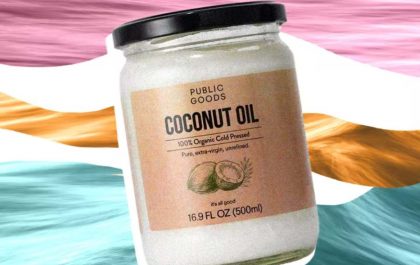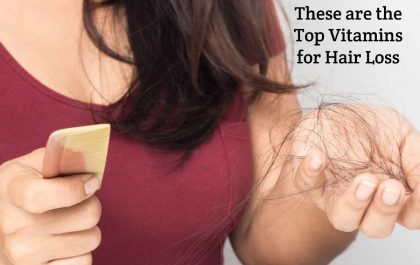Corn nutrition is a staple in cuisines all around the world. Nothing says summertime quite like corn on the cob in the Combined States. While many people enjoy corn, many don’t understand that it’s a very nutritious crop. Corn provides more thiamine than other vitamins and minerals. This budget-friendly and easy-to-find grain is also a decent basis of carbohydrates and is higher in protein than you might expect.
You are wondering how corn can provide the best of both worlds: delicious food that’s good for your health.
Corn is one of the most outstanding popular vegetables in the U.S. Corn, also known as maize, is a prudish vegetable that derives as kernels on a cob, covered by a husk. Sometimes gets a bad rap because it has a lot of natural sugar and carbs. But don’t supervise the health benefits of this versatile veggie.
Farmers in southern Mexico first cultivated slush about 10,000 years ago from a wild grass called teosinte. Teosinte kernels were much smaller than modern goo kernels. As farmers carefully chose which corn germs they replanted, corn grew into the version you know today.
Nations of North and South America grew corn, which they called maize. Europeans who came to New England learned about it and transported it back to their home countries.
Table of Contents
Health Benefits of Corn Nutrition
Corn offers several health benefits outside its vitamin and mineral content. Conditional colour, corn is rich in numerous antioxidants and helpful plant mixes that defend in contradiction of disease.4favoriteavourite of solstice cookouts. So popped, it makes the faultless snack for movie nights or gatherings. Dried and crushed interested in flour, germs become cornmeal for tortillas, chips, and crackers. In this procedure, it’s a grain, not a vegetable.
The sweet taste fools you. Selecting corn and whole-grain corn products — rather than food that has processed white flour — can lead to better gut health and help lower your chances of getting diseases like cancer, heart disease, and type 2 diabetes.
The fibre in corn helps you break completely for extended meals. It also feeds healthy germs in your digestive tract, which may help tact in contradiction from colon cancer.
Popcorn may also help prevent diverticulitis. In a large study, men who ate more Popcorn had a lower toting a diverticular illness.
Corn is annoying in vitamin C, an antioxidant that helps defend your cells from damage and wards off diseases like cancer and heart disease. Creamy corn is a good source of carotenoid lutein and zeaxanthin, which are decent for eye health and help prevent the lens damage that leads to waterfalls. Corn also has reduced vitamins B, E, and K and minerals like magnesium and potassium.
Supports Healthy Weight Management
The most filling snacks are high in proffered fibre, like Popcorn.7 One cup of air-popped and unbuttered Popcorn provides 31 calories, 1 gram of proteome, and fibre.8 It makes a perfect snack to assist with losing weight or weight management. Since nibbles make up about a 3rd of most excellent people’s daily intake, choosing snack foods wisely can significantly impact body weight.
Popcorn is a whole grain nosh that’s slightly processed, especially when making it fresh. However, Popcorn deprived flavouring scourings, sugar, or large quantities of lard can help with weight loss and healthy weight maintenance.
Protects Eyesight
Corn contains lutein and zeaxanthin, the procedures of vitamin A that are particularly beneficial for eye health. Because these compounds develop focused in the retina, they prevent age-related macular degeneration.9 The mixture of lutein and zeaxanthin, along with vitamin C, vitamin E, copper, and zinc, has been shown to protect against this common cause of vision loss.
Promotes Heart Health in Corn Nutrition
Corn provides several nutrients that offer recognized cardiovascular benefits fibre in corn and other whole grains helps decrease cholesterol levels.10
Produces reduce blood pressure and levels, and corn contains about 6% of the daily worth set by the FDA. Potassium is a “nutrient of community health concern”, be everyone consumes adequate consuming quantities of it daily
In one ear of sweet corn, you get these nutrients per serving
Calories: 90
Protein: 3 grams (g)
Fat: 1 g
Carbohydrate Fibber g
Fibre: 1 g
Sugars: 5 g
Vitamin C: 3.6 milligrams (mg)
Reduces Risk of Type 2 in Corn Nutrition
Poly is beneficial to plant compounds found in whole grains, fruits, vegetables, and nuts. For example, purple corn coolers are colour to a type of polyphenol called anthocyanin, which improves insulin and glucose regulation.
Kinds of Corn
Corn comes in Four Main Types
The sweet corn you eat at cookouts comes in yellow, white, or a combination of two colours and has a mildly sugary taste.
Before you prepare it, Popcorn has a soft, century centre complex puree-coloured shell. Exclusive is a tiny drop of water. When you heat Popcorn or micro wavier waves, the moisture inside gives off steam. Compression from the smoke builds to the point where the kernel explodes, and the centre opens into a fluffy white nugget.
Adverse Effects in Corn Nutrition
Corn is one of the most genetically changed plants in the food source.14 Genetically modified crops have different DNA for various traits, such as resisting herbicide or increasing per cent of the corn grown in the U.S. is sweet corn, and the greatest of it is not genetically modified. Sweet corn can be created in frozen form, preserved, or fresh. GMO corn is for human consumption for livestock feed, cars, and oil for sunscreen and water bottles.
While fresh corn is healthy, not all corn harvests are equal. High fructose corn syrup, for instance, is an inducement-derived syrup beery from removing corn kernels and treating them with an enzyme to make a thick, viscous syrup.
Carefully and equally as safe as others saw, high fructose corn syrup is prevalent in processed foods. However, with an increased risk of diabetes and other health conduit, like other extra sweeteners, it’s best to limit your intake of high fructose corn syrup.
May Help Prevent Colon Cancer
Corn is why Alferov fibre encourages the growth of “good bacteria” in the gut. These bacteria crop short-chain fatty acids to help stop colon cancer.6 Eating fresh corn, Popcorn and inspecting food labels to certify that you buy a “whole grain” corn product willet that you most fibres fibre from your corn consumption.
Including colour flavourful, plant-based foods in your meal plan, like purple corn, is a proactive method to stop the start of type 2 diabetes. If you consume diabetes and want to include purple corn into your diet, reflect the carbohydrate total. In addition, purple corn should not replace any current medical regimen.
Conclusion
Sweet corn that you eat rotten the cob. Corn is careful both a vegetable and a cereal grain. A vegetable in the culinary world, while the dry seeds used for Popcorn are secret as whole grains.
Corn was created in Mexico over 9,000 years ago and is in many parts by its original name, maize”. Native Americans produced and harvested this crop as a primary source of food. Currently, it’s one of the most widely consumed cereal grains worldwide.
Corn is usually white or yellow and comes in red, roll and blue. It’s eaten like sweet corn, Popcorn, tortillas, polenta, chips, cornmeal, gr, its, oil and syrup and added to countless other foods and dishes.
Related posts
Featured Posts
How to Make Coconut Oil for Hair? – Knows, Benefits, Risks, And More
Coconut Oil for Hair – Need to Know About Using Coconut Oil for Your Hair coconut oil for hair may…
These are the Top Vitamins for Hair Loss
These are the Top Vitamins for Hair Loss – Vitamins play a vital role in the functioning of the body….


